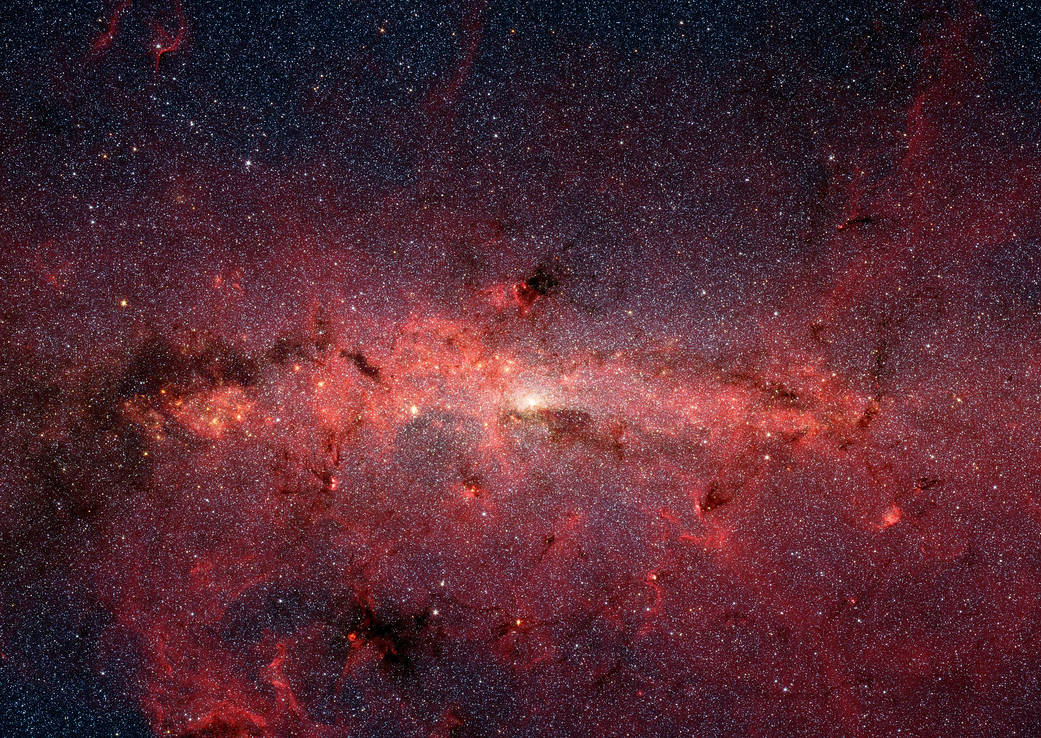The center of our Milky Way galaxy is hidden from the prying eyes of optical telescopes by clouds of obscuring dust and gas. But in this stunning vista, the Spitzer Space Telescope’s infrared cameras penetrate much of the dust, revealing the stars of the crowded galactic center region. The upcoming James Webb Space Telescope will offer a much-improved infrared view, teasing out fainter stars and sharper details.
The center of our galaxy is a crowded place: A black hole weighing 4 million times as much as our Sun is surrounded by millions of stars whipping around it at breakneck speeds. This extreme environment is bathed in intense ultraviolet light and X-ray radiation. Yet much of this activity is hidden from our view, obscured by vast swaths of interstellar dust.
NASA’s James Webb Space Telescope is designed to view the universe in infrared light, which is invisible to the human eye, but is very important for looking at astronomical objects hidden by dust. After its launch, Webb will gather infrared light that has penetrated the dusty veil, revealing the galactic center in unprecedented detail.
Image Credit: NASA, JPL-Caltech, Susan Stolovy (SSC/Caltech) et al.
银河系的中心被尘埃和气体所遮盖的云层掩盖在光学望远镜窥探的眼睛中。但在这张令人惊叹的照片中,斯皮策太空望远镜的红外摄像机穿透了大部分尘埃,揭示了拥挤的银河系中心区域的恒星。即将问世的詹姆斯·韦伯太空望远镜将提供一种改良版的红外线视野,能分辨出更暗淡的恒星和更清晰的细节。
我们银河系的中心是一个拥挤的地方:一个质量是太阳400万倍的黑洞被无数恒星围绕着,它们以极快的速度绕着黑洞旋转。这种极端的环境沐浴在强烈的紫外线和X射线辐射中。然而,在我们看来,大部分活动是被大量星际尘埃所掩盖的。
美国国家航空航天局(NASA)的詹姆斯·韦伯太空望远镜(James Webb Space Telescope)旨在用人眼看不见的红外光观察宇宙,红外线肉眼是看不见的,但对于观察隐藏在尘埃中的天体非常重要。发射后,韦伯将收集穿过尘埃面纱的红外线,以前所未有的细节揭示银河系中心。
图片来源: NASA, JPL-Caltech, Susan Stolovy (SSC/Caltech) et al.







